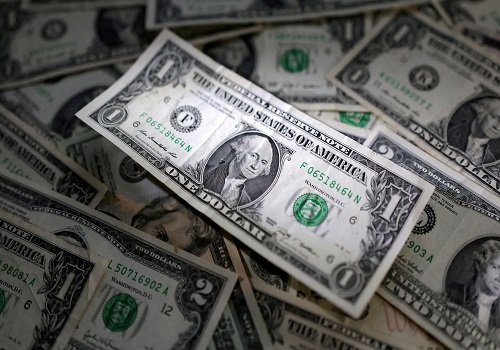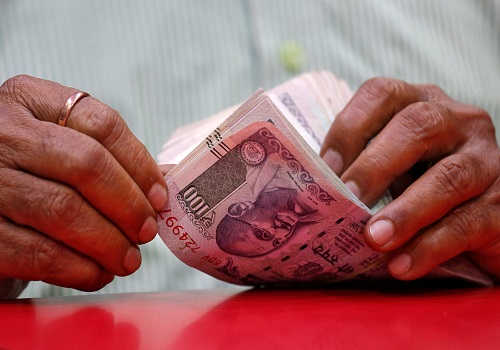India's October retail inflation eases to 6.77% y/y

Follow us Now on Telegram ! Get daily 10 - 12 important updates on Business, Finance and Investment. Join our Telegram Channel
India's annual retail inflation eased to 6.77% in October helped by slower rises in food prices and base effect, but remained above central bank's tolerance limit, strengthening views of lower rate hikes when it meets for policy review in December.
Annual retail inflation in October was higher than the 6.73% forecast by economists in a Reuters poll, and below 7.41% the previous month, data released by the National Statistics Office on Monday showed.
Food inflation, which accounts for nearly 40% of the CPI basket, rose 7.01% in October compared to 8.60% in September.
Month on month retail inflation rose 0.80% in October compared to the previous month while retail food inflation rose 1.08% - reflecting inflationary pressures in the economy.
COMMENTARY
NAMRATA MITTAL, ECONOMIST, SBI MUTUAL FUND, MUMBAI
"CPI inflation is likely to stay around 6.5% until February 2023. It's likely to moderate meaningfully starting next fiscal year, aided by high base, likely contained commodity prices, and moderation in price hikes taken in household goods and services (G&S) going ahead."
"Aggressive price hikes on household G&S since last one year has impacted the purchasing power in smaller cities and rural India. It was strongly evident in our rural channel checks for this season."
"Based on earnings commentary for this quarter, we gather that price rise in household G&S will have to moderate going ahead. In fact, we do not rule out the discounts in coming months. Hence, but for any global commodity shock and domestic weather anomalies, we derive a stronger conviction towards 5% CPI inflation in India very soon (from 7% prints in last few months)."
MADHAVI ARORA, LEAD ECONOMIST, EMKAY GLOBAL FINANCIAL SERVICES, MUMBAI
"Although inflation is facing near-term upside risks, it will likely average around the RBI's estimate of 6.7%. Despite the mild easing in input cost of production, the inflation outlook is fraught with considerable uncertainty, given the volatile geopolitical situation, global financial-market volatility, supply disruptions and unseasonal rains, while resilience in demand could also keep core inflation high."
"Still, with international commodity prices coming off their highs, we expect headline inflation to fall in the coming months, and return to the central bank's target range in coming quarters."
"While moderation in WPI inflation offers some comfort, elevated inflation at the retail level suggests the need for the RBI's MPC to maintain vigilance over evolving price trends."
RUPA REGE NITSURE, GROUP CHIEF ECONOMIST, L&T FINANCIAL HOLDINGS, MUMBAI
"While no one can project a trend based on just one print, it is quite likely that inflation is going to soften further, partly aided by a favourable statistical base and partly by a steady decline in many food article prices, anchoring of inflation expectations due to the RBI's previous tightening, and stable fuel prices."
"I expect the Reserve Bank of India (RBI) to reduce the pace of tightening from the December meeting. However, the actual magnitude of the rate hike will be dependent on many data points such as bank credit growth, corporate earnings, CMIE employment statistics, PV sales, etc."
PRITHVIRAJ SRINIVAS, CHIEF ECONOMIST, AXIS CAPITAL, MUMBAI
"The sharp drop in YoY (year-on-year) inflation is mainly from headline components like food and fuel, and partly to do with high base from last year when commodity prices ran up. Oil price inflation has slowed since March 2022 highs and international metal prices have also come off (even in rupee terms), therefore arresting input price inflation in goods."
"Moreover, since demand has not fully recovered to pre-pandemic levels, pricing power hasn't broadened. As a result, sequential seasonally adjusted inflation has also eased to 0.2% MoM (month-on-month) vs 0.4% average in preceding five months. We see headline CPI slowing to 5% YoY by March 2023. While sequential price pressures have eased, we maintain that inflation risk hasn't abated and sits in the very wide external trade deficit."
SREEJITH BALASUBRAMANIAN, ECONOMIST, IDFC AMC, MUMBAI
"India's October CPI of 6.77% y/y was in line with our expectations and food price momentum picked up a bit further. Although prices of cereals, pulses, and vegetables picked up (real time data and news had suggested this), that of milk, meat, fish, and eggs was softer than expected."
"CPI readings in the next few months would continue to be defined by the trajectory of food prices, in the context of crop damage due to excessive rains in October etc. But latest data also suggests some easing in food prices from that during the beginning of the month. Services price pressure, the trajectory of global slowdown etc. will be important for CPI's medium-term path."
SONAL BADHAN, ECONOMIST, BANK OF BARODA, MUMBAI
"We expect CPI (YoY) to moderate further in the coming months as well on account of base effect and declining international commodity prices. However, movement in food prices will have to be closely watched, in particular vegetables, cereals, and pulses, owing to unseasonal domestic rains and rising international food prices (wheat)."
"On a MoM basis, pressure is seeing a build-up in case of vegetables, fruits, and oils. Cereals and pulses may also come under pressure in the coming months. Among others, prices of transportation, personal care effects, and housing saw a MoM increase in October 2022."
"Assuming international commodity prices do not present a negative surprise, base effect will help cool down inflation more quickly from December 2022 onwards."
"We are expecting a 35bps hike in December 2022 and see the terminal repo rate at 6.5% in March 2022."
SAKSHI GUPTA, PRINCIPAL ECONOMIST, HDFC BANK, GURUGRAM
"Inflation moderated in October, broadly supported by a high base effect from last year. Core inflation continued to remain sticky at 6%. Going forward, as food inflation moderates in the winter season and favourable base effects continue to play out, headline inflation is likely to tread closer to 6% over the coming months. The Reserve Bank of India (RBI) is not done with its rate hikes as of yet and is likely to hike by another 25bps-35bps in December, and possibly by another 25bps in February, taking the terminal rate closer to 6.5%. However, clearly, we seem to be nearing the end of the rate hiking cycle."
KUNAL KUNDU, INDIA ECONOMIST, SOCIETE GENERALE, BENGALURU
"The base effect-driven easing of headline inflation does not herald the beginning of easing inflationary cycle. We believe it will be the base effect that will push inflation once again to beyond 7% starting from December once the favourable effect turns decisively adverse and the headline inflation likely potentially testing the April high during February (if not earlier)."
"Stubbornly high core inflation (the highest reading in eight years and rising), despite the lower headline print is indicative of the fact that price pressure is not going to go away in a hurry."
"Eventually, starting from 2Q23, inflation will meaningfully ease and India will likely experience a sustained disinflationary trend (rather than the yo-yo movement one is getting used to of late), albeit with a slope that is flatter. Food inflation too will follow a similar pattern as the headline inflation."












 320-x-100_uti_gold.jpg" alt="Advertisement">
320-x-100_uti_gold.jpg" alt="Advertisement">











